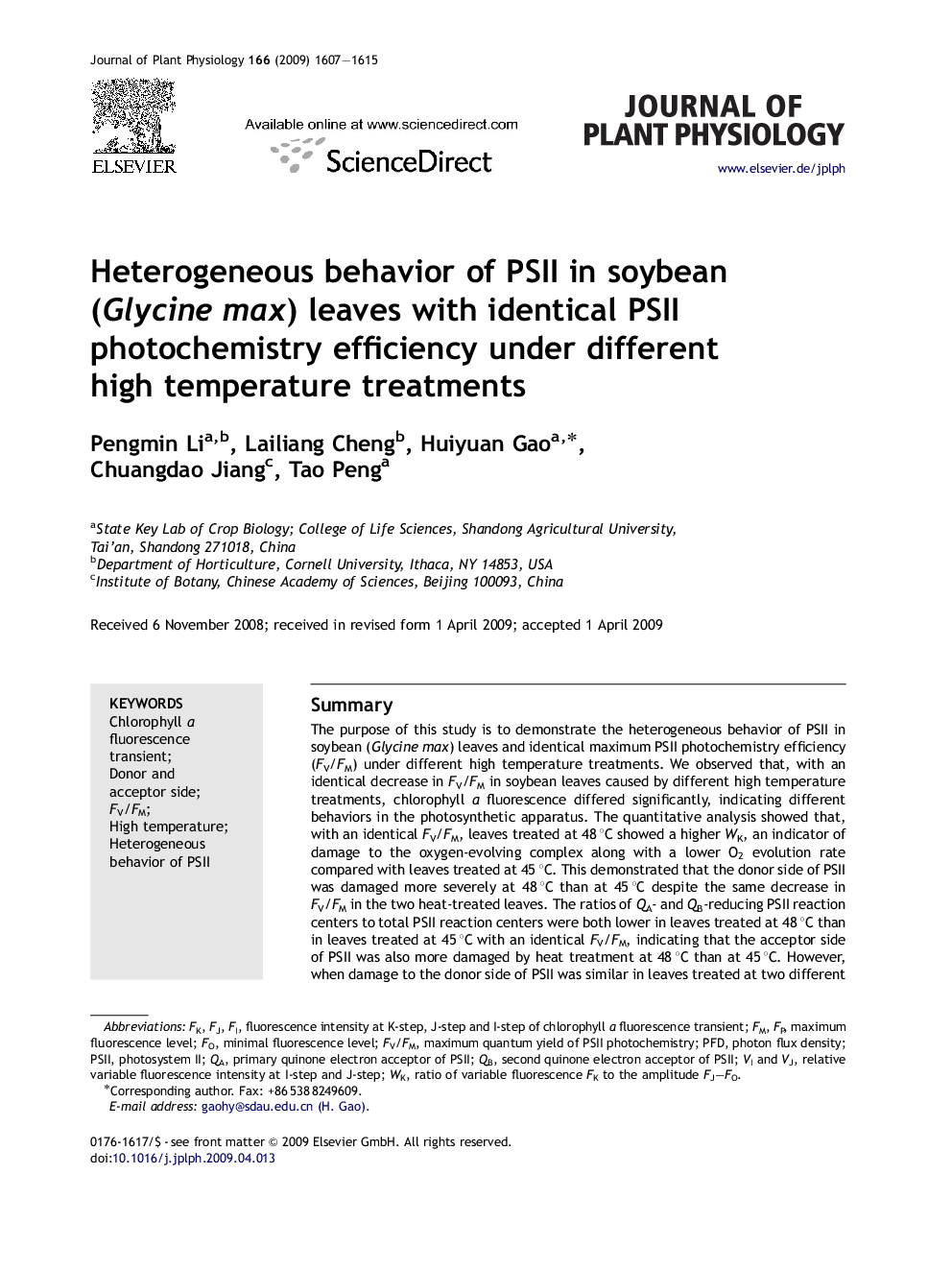| کد مقاله | کد نشریه | سال انتشار | مقاله انگلیسی | نسخه تمام متن |
|---|---|---|---|---|
| 2057883 | 1076069 | 2009 | 9 صفحه PDF | دانلود رایگان |

SummaryThe purpose of this study is to demonstrate the heterogeneous behavior of PSII in soybean (Glycine max) leaves and identical maximum PSII photochemistry efficiency (FV/FM) under different high temperature treatments. We observed that, with an identical decrease in FV/FM in soybean leaves caused by different high temperature treatments, chlorophyll a fluorescence differed significantly, indicating different behaviors in the photosynthetic apparatus. The quantitative analysis showed that, with an identical FV/FM, leaves treated at 48 °C showed a higher WK, an indicator of damage to the oxygen-evolving complex along with a lower O2 evolution rate compared with leaves treated at 45 °C. This demonstrated that the donor side of PSII was damaged more severely at 48 °C than at 45 °C despite the same decrease in FV/FM in the two heat-treated leaves. The ratios of QA- and QB-reducing PSII reaction centers to total PSII reaction centers were both lower in leaves treated at 48 °C than in leaves treated at 45 °C with an identical FV/FM, indicating that the acceptor side of PSII was also more damaged by heat treatment at 48 °C than at 45 °C. However, when damage to the donor side of PSII was similar in leaves treated at two different temperatures, the acceptor side of PSII was damaged less severely at 48 °C, which accounted for higher electron transport rate at the acceptor side of PSII in leaves treated at 48 °C than in leaves treated at 45 °C.
Journal: Journal of Plant Physiology - Volume 166, Issue 15, 15 October 2009, Pages 1607–1615